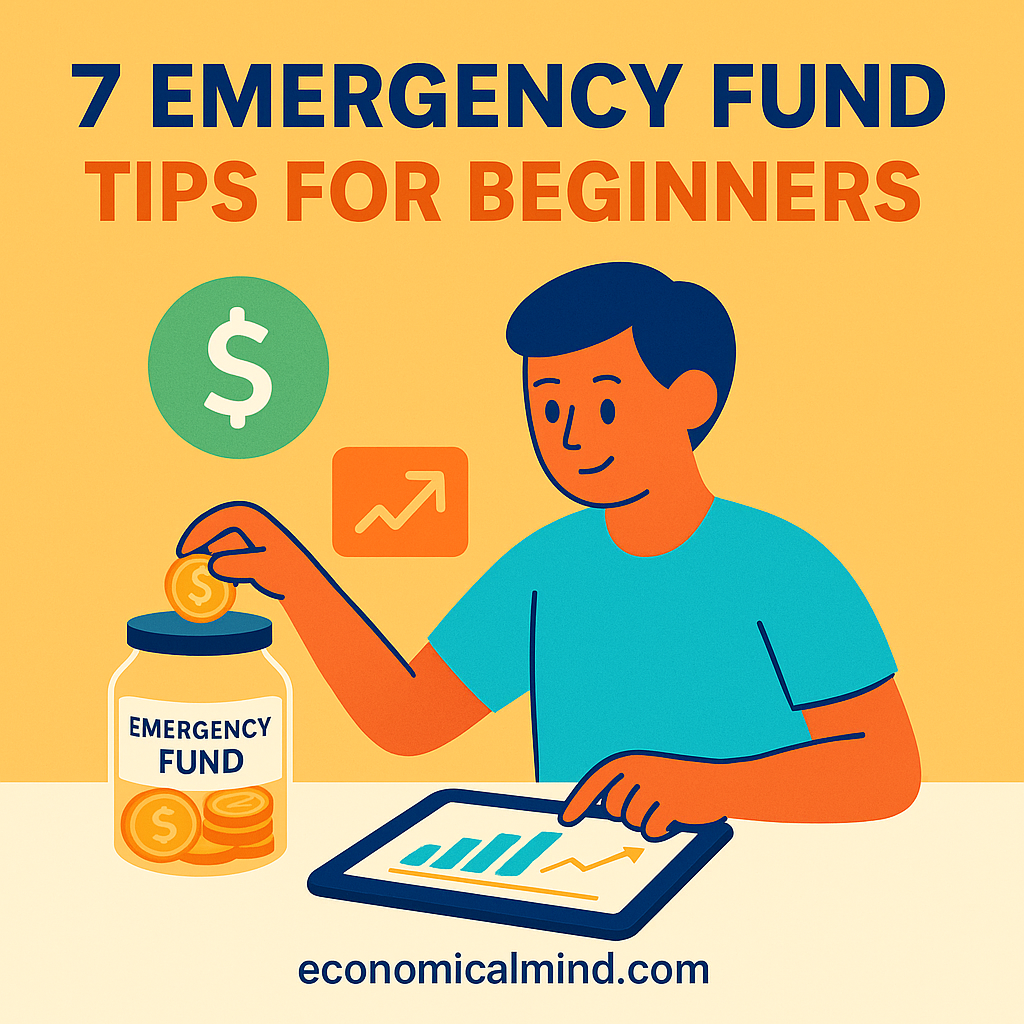
Why an Emergency Fund Is Essential
Unexpected expenses don’t care about your schedule. Whether it’s a car repair, medical bill, or sudden job loss, an emergency fund protects you from financial stress.
With living costs rising, having a cash safety net isn’t a luxury — it’s a necessity. An emergency fund gives you peace of mind and keeps you from relying on high-interest credit cards or loans when life happens.
1. Start Small — But Start Now
The hardest part of saving is getting started. You don’t need thousands right away.
Begin with a small goal: $500 to $1,000.
This covers most short-term emergencies like a flat tire, doctor visit, or appliance repair.
Once you hit that milestone, you can build toward a larger target — typically 3–6 months of expenses.
Pro tip: Automate a small transfer (even $10–$25 per week) to your emergency fund. Consistency beats perfection.
2. Calculate Your Target Fund Size
Your ideal emergency fund depends on your situation:
- Single or part-time job: Aim for 6 months of expenses
- Dual-income household: 3 months may be enough
- Freelancer or self-employed: 9–12 months provides better security
Add up essentials only — rent/mortgage, utilities, groceries, insurance, and minimum debt payments — to get your target number.
Having a clear goal helps you stay motivated and measure progress.
3. Keep It Separate From Everyday Spending
Your emergency fund should be in its own account — not mixed with your checking account.
Use a high-yield savings account so your money earns interest while staying easy to access.
Top-rated online banks like Ally, SoFi, and Discover currently offer around 4–5% APY.
Avoid investing your emergency fund — the stock market can drop just when you need the cash.
4. Automate Your Savings
Set up an automatic transfer from your main account to your emergency fund every payday. Treat it like a bill you must pay — to your future self.
Automation removes emotion and discipline from the equation. You’ll save without thinking about it, and over time those small amounts add up faster than you expect.
5. Use Windfalls to Boost Savings
Whenever you receive extra money, add part (or all) of it to your emergency fund:
- Tax refunds
- Work bonuses
- Cash gifts
- Side hustle income
These windfalls are perfect for accelerating your savings without impacting your daily budget. Even one or two big deposits a year can get you to your goal much faster.
6. Rebuild After You Use It
If you dip into your emergency fund, that’s exactly what it’s there for — but make sure to refill it immediately after.
Once the emergency passes, resume automatic transfers or add a temporary boost until the fund is back to full strength.
Think of it as recharging your financial safety battery.
7. Keep It Accessible but Not Too Tempting
Your emergency fund should be easy to access in a real emergency — but not too easy for impulse spending.
Avoid linking it to your debit card or main checking account. Use a separate login or account at a different bank to create a small “friction barrier” that discourages casual withdrawals.
This small separation helps ensure you use it only for genuine emergencies.
Bonus Tip: Define What Counts as an Emergency
Before you start saving, decide what situations justify dipping into the fund. Examples:
✅ Car repair
✅ Medical bill
✅ Unexpected job loss
🚫 Concert tickets
🚫 New phone upgrade
Being clear about this from the start helps prevent emotional spending and keeps your savings intact.
Final Thoughts
An emergency fund is the foundation of a strong financial plan.
It’s not about perfection — it’s about protection.
Start small, stay consistent, and keep your savings separate from everyday money. Over time, your emergency fund will give you financial confidence and peace of mind — no matter what life throws your way.
